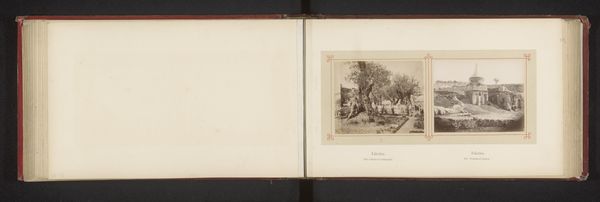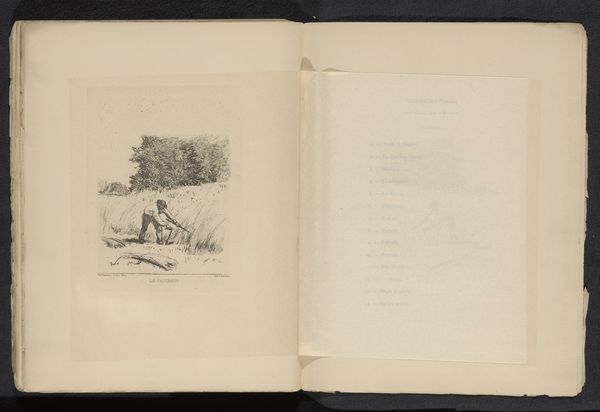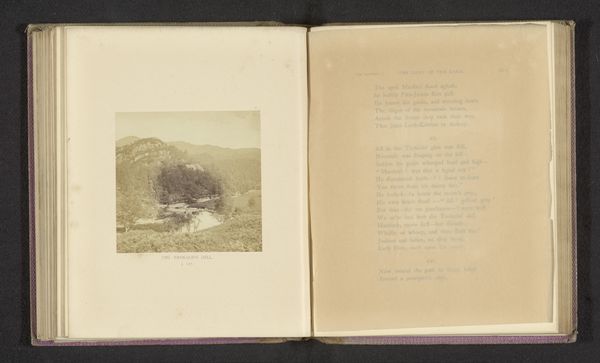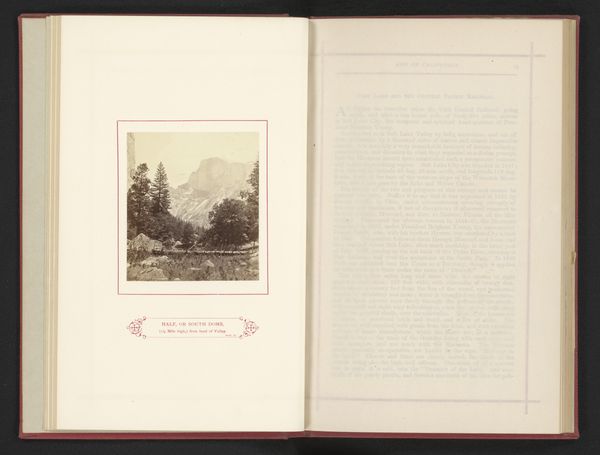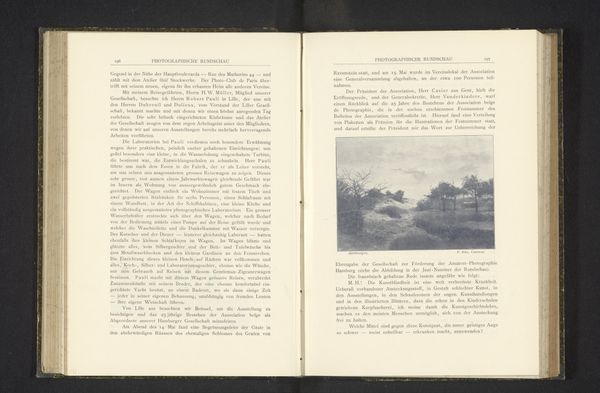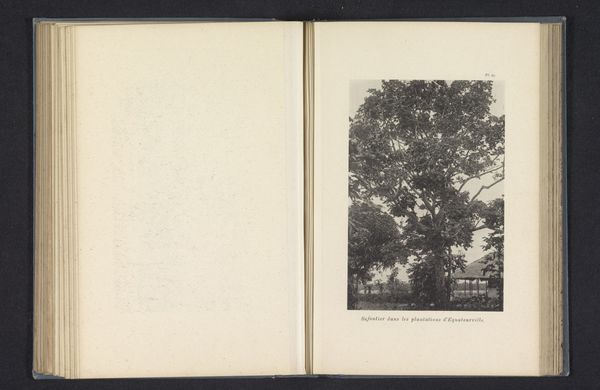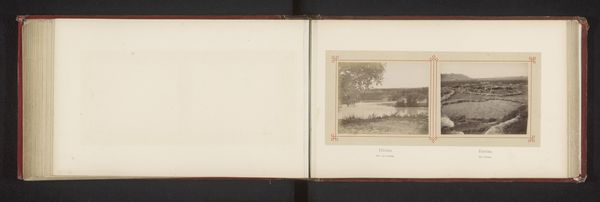
print, photography, gelatin-silver-print, albumen-print
# print
#
landscape
#
river
#
photography
#
gelatin-silver-print
#
albumen-print
Dimensions: height 91 mm, width 85 mm
Copyright: Rijks Museum: Open Domain
Curator: This is a gelatin silver print by Thomas Ogle, titled "Gezicht op een rivier in Glen Finglas", created sometime before 1865. The albumen print depicts a view of a river running through a rugged landscape. Editor: There’s something so wonderfully still and calm about this scene, even though it depicts moving water. The composition, the tonal range from near whites to richer dark browns—creates a wonderful serenity. Curator: I think that’s partially due to the relatively long exposure times used for landscape photography during this era, particularly with albumen prints. Notice how the river seems almost like glass in some parts; that smoothness flattens perspective, further abstracting it. Editor: Absolutely. It strikes me, thinking of the cultural context, that this almost romantic vision of the Scottish landscape occurred in the context of Victorian industrialization. This image offers a carefully constructed escape from the chaos and grime of cities. What do you make of that stark contrast? Curator: It’s a fair reading. Land became a marker of identity and heritage—think of Landseer’s paintings of stags in the Highlands, reproduced en masse. Photography aided in capturing, classifying, and then distributing that identity far beyond the physical borders of Scotland. And with advancements in print technology, these landscape images became much more accessible to middle class audiences. Editor: And what an elegant image to disseminate. There is an underlying asymmetry at work here, with a slight emphasis on the left side of the picture frame by the copse of trees there; the lack of vibrant colors makes it seem incredibly fragile. The way he's structured the space of the scene leads to a focus on shape and arrangement. Curator: It is striking, isn't it? Looking at how Ogle composed the image, I am curious about what that balance conveys and if that influences how his audience perceives Glen Finglas. Editor: Maybe the question is this—are we looking at a vision of an actual place, or are we primarily looking at an aesthetic and ideological construction? Curator: Possibly both, or somewhere in-between! It makes one appreciate how seemingly straightforward depictions conceal complex layers of intention and historical significance.
Comments
No comments
Be the first to comment and join the conversation on the ultimate creative platform.






